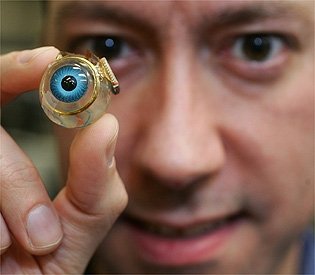
Bionic Vision Australia's prototype bionic eye implant has 24 electrodes
Singapore: In a major development, Bionic Vision Australia researchers have successfully performed the first implantation of an early prototype bionic eye with 24 electrodes. Professor Rob Shepherd, director of the Bionics Institute, led the team in designing, building and testing this early prototype to ensure its safety and efficacy for human implantation. Cochlear technology supported aspects of the project.
Ms Dianne Ashworth, who had profound vision loss due to retinitis pigmentosa, has now received what she calls a 'pre-bionic eye' implant that enables her to experience vision. The implant is only switched on and stimulated after the eye has recovered fully from the effects of surgery.
The next phase of this work involves testing various levels of electrical stimulation with Ms Ashworth.This early prototype consists of a retinal implant with 24 electrodes. A small lead wire extends from the back of the eye to a connector behind the ear. An external system is connected to this unit in the laboratory, allowing researchers to stimulate the implant in a controlled manner in order to study the flashes of light. Feedback from Ms Ashworth will allow researchers to develop a vision processor so that images can be built using flashes of light.
This early prototype does not incorporate an external camera, yet. This is planned for the next stage of development and testing. Researchers continue development and testing of the wide-view implant with 98 electrodes and the high acuity implant with 1024 electrodes. Patient tests are planned for these devices in due course.
Professor emeritus David Penington AC, chairman, Bionic Vision Australia, said that, "These results have fulfilled our best expectations, giving us confidence that with further development we can achieve useful vision. Much still needs to be done in using the current implant to 'build' images for Ms Ashworth. The next big step will be when we commence implants of the full devices."




